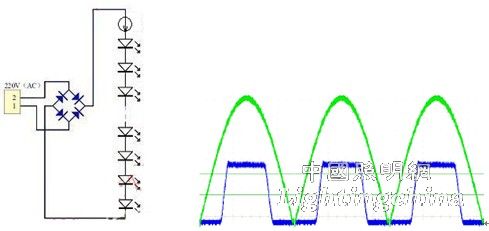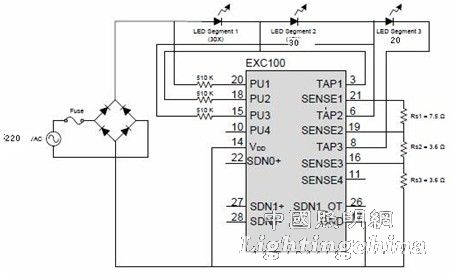2012 is the first year that LEDs have entered indoor and home lighting on a large scale, and it is also the first year for civilian LEDs. As a civilian product, more stringent requirements are imposed on the performance, price and reliability of the product. On the one hand, it is required that the luminous efficiency of LEDs is continuously improved and the price is continuously lowered. On the other hand, there are many requirements for the constant current driving source of the LED. In the eyes of ordinary people, the life of LED itself is already very high, but the actual life is very low, often caused by low power supply life. The life of a power supply often depends on the life of the electrolytic capacitor. Because the life of electrolytic capacitors is generally considered to be very low. If the constant current source does not have an electrolytic capacitor at all, its lifetime can be very high. Moreover, the power factor can be improved after the electrolytic capacitor is removed. Therefore, a variety of constant current sources of electroless capacitors attract a lot of attention.
A simple method of electroless capacitor
It is easy to remove the electrolytic capacitor, and it can work.

Figure 1. The simplest electroless capacitor circuit
However, the life of such a circuit is shorter because it does not use a constant current measure, so when the input voltage rises or the temperature rises, the current rises rapidly, so that the LED is burned soon. Although the resistor current limiting can solve some problems, its efficiency is only 52%-73%. It is totally unacceptable.
Therefore, constant current must be applied, even the simplest constant current diode.

Figure 2. Electroless capacitor circuit and current waveform with constant current diode
However, this circuit is also inoperable. Because the input is half a sine wave, the LED can't start at low voltage. Although the voltage can rise to a certain level, it can be constant current. At this time, the current waveform is close to a rectangular wave, so its power factor is not amazing. Satisfactory, because the power factor can be equal to 1 only when the current waveform is the same as the voltage waveform. So can you develop a circuit that makes its current waveform as close as possible to the voltage waveform?
2. ExClara's EXC100 solution
ExClara in Silicon Valley, USA, proposed a solution that would solve this problem in close proximity. Since the current can only be flat after using a constant current diode, it is only possible to use a staircase wave to approach the sine wave.

Figure 3. Using a rectangular wave to approximate a sine wave and a measured map
This seemingly simple thing, really to achieve is a very complicated matter. In order to obtain such a current waveform, it is necessary to sequentially turn on the LED strings having different constant current values. The specific block diagram of its EXC100 chip is shown in Figure 4.

Figure 4. Connection diagram of the EXC100
It first measures the input voltage. After the input voltage reaches a certain value, it starts to turn on the first string of constant currents at a lower value. After reaching a higher voltage, it starts to connect the second string after the first string. The LED is constantly flowing at a higher current; finally, after the voltage is higher, the third string of LEDs is turned on and the current is constantly flowing to a higher value. So its internal structure is very complicated.